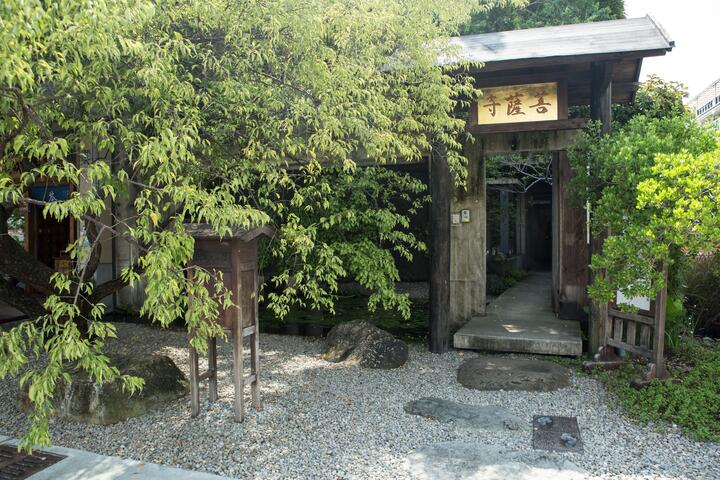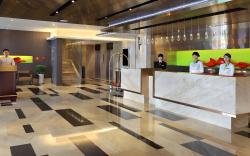Bodhisattva Temple Introduction
Pusatsu Temple is located in Dali District, Taichung City. The architectural appearance does not feature the traditional palace-style hip roofs or ornate carvings and glazed tiles typical of religious temples, but instead uses raw concrete as its architectural vocabulary, adhering to a philosophy of simplicity and authenticity. The main entrance is designed around the concept of "retreat," allowing part of the building line to concede to an old plum tree planted by the road, with a stone underneath for passersby to rest. The entrance is inscribed with the words "Anju," inviting visitors to "return to the home of the Bodhisattva," just as one would "return to one's own home" and reside peacefully. Upon entering, the reminder to "take care of what is underfoot" serves not only as a caution but also embodies the Buddhist meaning of "being grounded and walking the path well." Crossing a small bridge leads to the "Other Shore of Pure Bliss," with the "Path of Seeking Spiritual Truth" underfoot being the core design concept of Pusatsu Temple. This path connects the first to the third floors: a turning platform, the Bodhisattva Hall, and reflections on the journey taken—each bend representing a decision and determination in the process of seeking truth. The courtyard boasts flowing water and sunlight, resembling a dreamlike illusion; with lily pads and swimming fish in the pond, it is vibrant with life; tree shadows dance above, while below sits the Buddha in serene enlightenment, subtly smiling. "With the Bodhi heart as the cause, great compassion as the root, and skillful means as the ultimate," various Bodhisattvas in peaceful postures are casually scattered throughout the temple, embodying solemn law. Every space in Pusatsu Temple introduces wind and light, with sounds and breezes flowing through. Stepping outside, one can feel the change in weather; returning indoors reflects the fluctuating states of mind— linking humanity to nature, where both intertwine, overlap, and converse, listening to each other while following the seasonal rhythms. In this interplay of morning and evening, and the changes of the four seasons, one can grasp the dialogue between heaven and humanity, nurturing a harmonious balance between people and nature, as well as between architecture and the environment. The interior features warm wooden materials as the medium between "people" and "walls." The first-floor walls are adorned with painted works that embody the philosophy of Pusatsu Temple, alongside the Buddhist phrase "Self-reliance, Dharma-reliance, no other reliance." On the second floor's Bodhisattva Hall, the view is dominated by an ancient Bodhisattva statue set against a backdrop of large glass windows, through which an old elm tree stretches its branches, changing with the seasons. The left side of the third floor is designated as the monks' meditation area, which is not open to the public; the right side has tables and chairs, equipped with the Heart Sutra, blank paper, and pens, inviting visitors to "slow down, calm the breath," and "write sutras." Using "writing" instead of "copying" is intended to encourage visitors to not only let go of worldly matters but also to engage in mindful reflection, as "the world of the heart is the most significant." The temple's head monk, Master Huiguang, advocates for "practicing in life, with practice not separate from life"— in Pusatsu Temple, the architecture is subtle, the spaces are minimalistic, and the environment is unpretentious—"because it is simple, it is rich." The architect states: "All profoundly moving architecture has endured time," and within the flow of time at Pusatsu Temple, we calm our thoughts, quiet our minds. In each step, we find truth, in each glance, we see the inherent freedom, and in each moment, we recognize the arising of connections.










































